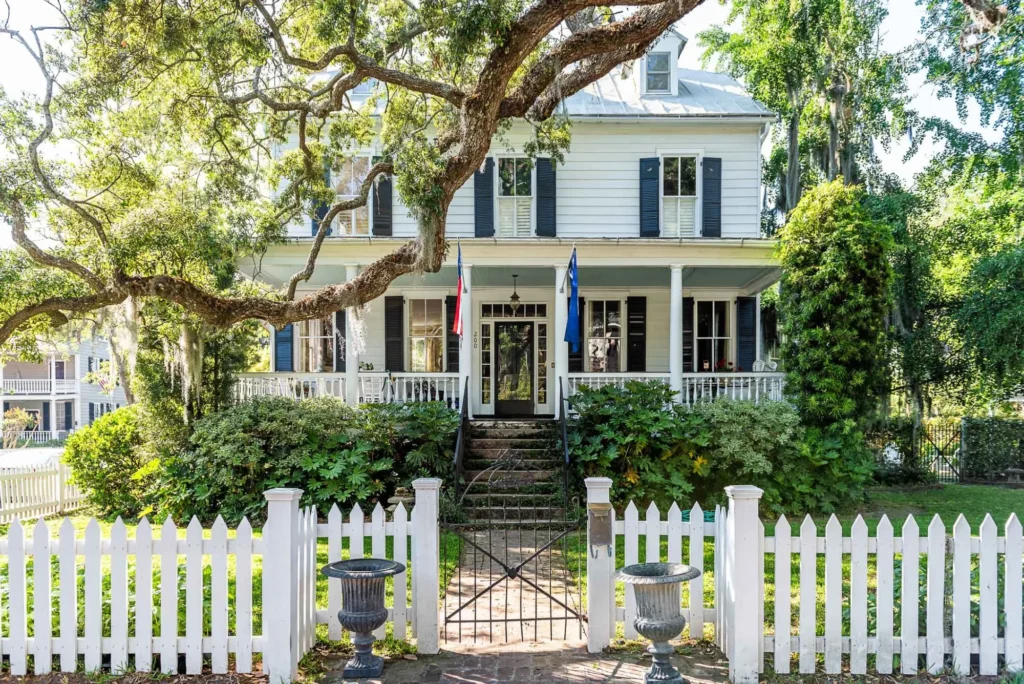
Get Rid of Millipedes in Your Sullivan’s Island Home for Good
Salt air, stilted homes, and shaded duneside landscaping bring millipedes to thresholds on Sullivan’s Island.
We protect finishes while treating under stairs and decks, then seal and dry entries for island-proof comfort. Call All U Need Pest Control at 1 (888) 239-BUGS.
Pest Control Services in Sullivan's Island, SC
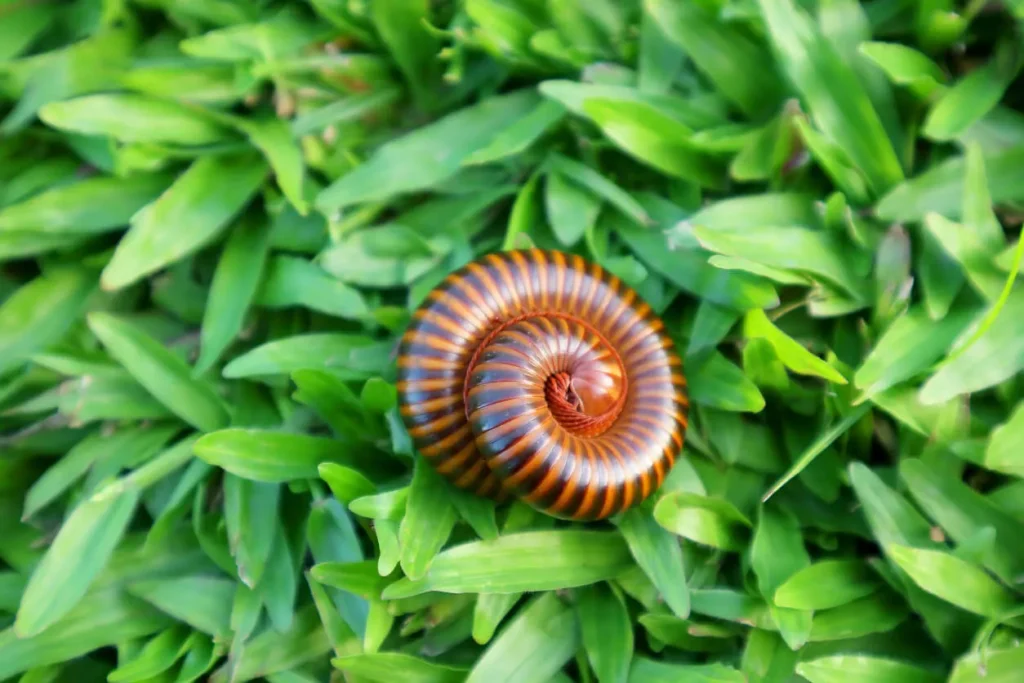
Millipede Control in Sullivan’s Island, SC
Sullivan’s Island is known for its pristine beaches, historic homes, and relaxed coastal lifestyle, but the same subtropical climate that makes the island beautiful also attracts pests like millipedes. These slow-moving arthropods thrive in moist, shaded environments filled with organic debris. After heavy summer rains, seasonal king tides, or extended humid stretches, millipedes often appear in large numbers, crawling along patios, porches, crawl spaces, and even inside homes. While they do not cause direct harm, their defensive fluids can stain porous surfaces and irritate sensitive skin, which makes them an unwelcome guest for island residents.
The island’s architecture and landscaping amplify the problem. Many homes on Sullivan’s Island are built on raised foundations with expansive porches, shaded courtyards, and lush vegetation. Palmettos, oaks, and ornamental shrubs provide year-round leaf litter, while pine straw mulch, a favorite across the island, traps moisture near foundations. These elements create the perfect conditions for millipede activity, particularly after rain events.
All U Need Pest Control delivers solutions designed for Sullivan’s Island’s unique environment. Whether it’s a historic beach cottage, a restored property near Fort Moultrie, or a modern home overlooking the Atlantic, our approach blends moisture control, habitat modification, and targeted treatments to keep millipedes out of your living spaces.
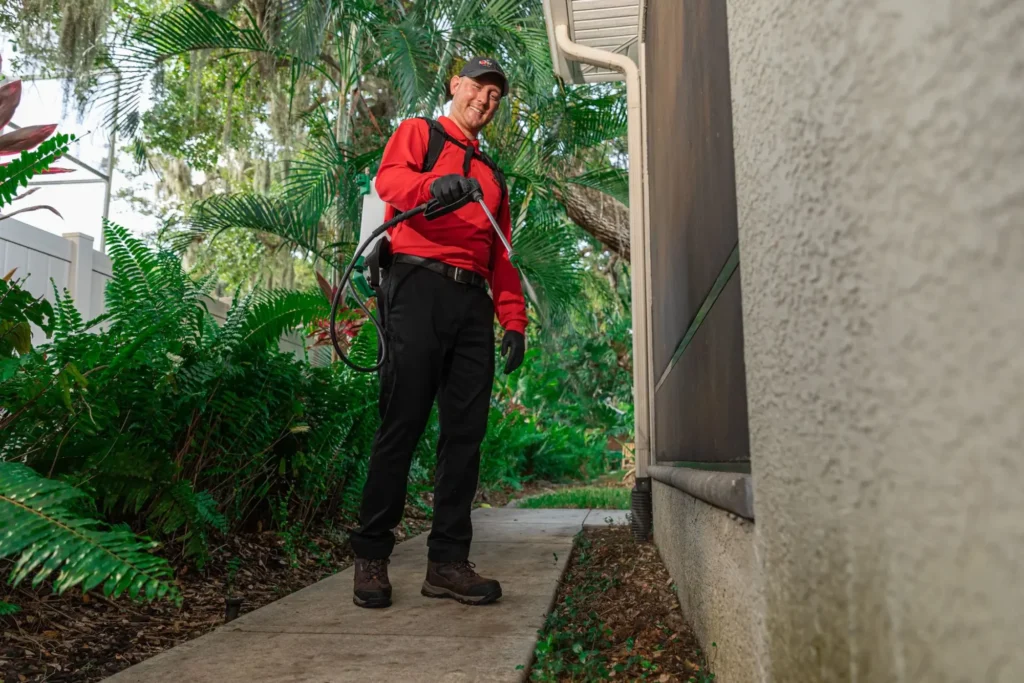
How to Get Rid of Millipedes in Sullivan’s Island, SC
Millipedes on Sullivan’s Island are drawn to damp, organic matter. They consume decaying vegetation such as mulch, leaves, and moist soil. When rainfall, tides, or irrigation systems saturate the ground, millipedes migrate toward drier areas, which often leads them indoors. Sweeping them aside without fixing underlying moisture and habitat issues will only provide temporary relief, and crushing them indoors leaves unsightly stains.
Here is a Sullivan’s Island-specific plan to stop millipedes:
Correct the moisture. Ensure gutters and downspouts direct water away from the foundation. Crawl spaces beneath elevated homes should stay dry with encapsulation or dehumidification. For slab-based structures, maintain vegetation-free strips near walls to prevent excess soil dampness.
Modify the habitat. Thin pine straw layers or replace them with gravel borders near your foundation to help areas dry quickly. Collect and dispose of fallen leaves, especially beneath palmettos and oaks. Trim back dense hedges to increase airflow and reduce shaded, moist pockets.
Seal the entry points. Install tight door sweeps, maintain sealed thresholds, and screen crawl-space vents. Use weep-hole covers in masonry without restricting ventilation. Sullivan’s Island homes often require customized solutions to fit their coastal designs.
Use targeted treatments. Professional perimeter and entry-point applications block migration paths. Timing applications to avoid heavy rains is crucial to keep barriers strong in Sullivan’s Island’s climate.
Maintain consistently. Seasonal services maintain barriers during high millipede activity from spring through late fall.
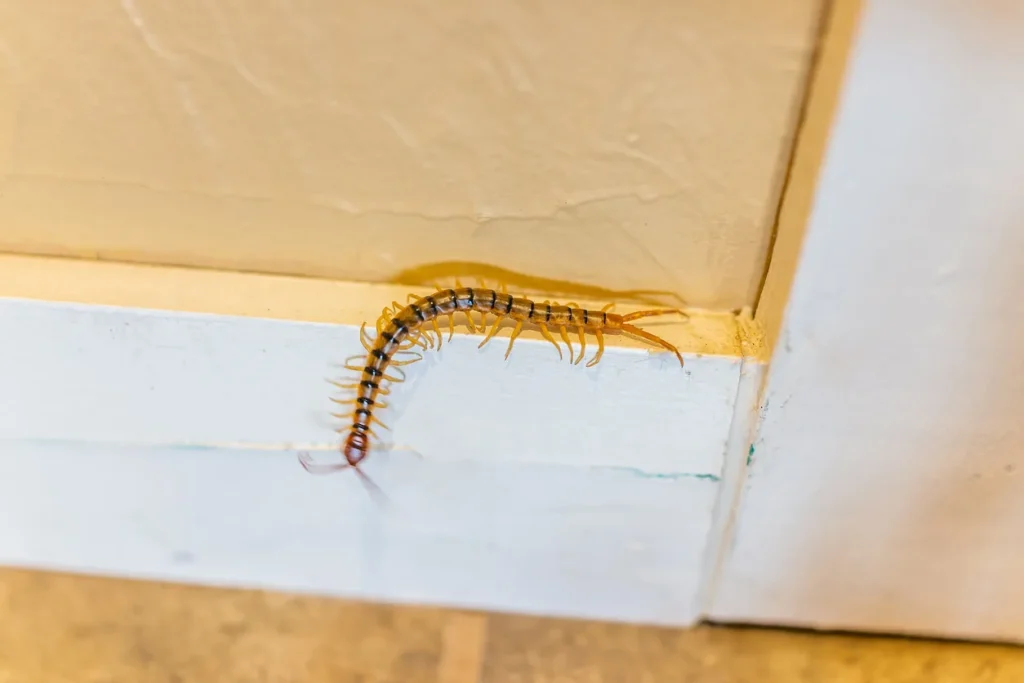
Millipede Treatment in Sullivan’s Island, SC
At All U Need Pest Control, we build customized programs for each property instead of relying on generic sprays. Sullivan’s Island’s combination of sandy soils, tidal wetlands, and shaded landscaping requires targeted strategies that address the causes behind infestations.
- The mix of ornamental and native plants in your yard that influence how much shade and moisture accumulate.
- The type, depth, and placement of mulch or stone around foundations, porches, and walkways.
- Irrigation systems, runoff, and drainage patterns that create persistently damp conditions.
- Proximity to marshes, beach dunes, or shaded courtyards that trap water.
We then refine our plan further by considering:
- The timing and locations of millipede activity, such as nightly migrations, post-storm surges, or accumulations in crawl spaces.
- Seasonal factors like king tides, tropical storms, and extreme humidity that push millipedes indoors, with risks varying for raised versus slab homes.
Our treatments rely on Integrated Pest Management (IPM) practices and carefully selected products. This ensures maximum effectiveness with minimal impact on the island’s natural ecosystem.
Comprehensive Inspection/Consultation
We begin by inspecting your property in detail. Our team checks grading, mulch depth, downspout function, irrigation patterns, and crawl-space moisture. For older island homes, we also inspect vapor barriers and sill plates, as well as shaded landscaping that traps dampness near foundations. The findings guide a step-by-step plan designed for your specific property.
Treatment
Treatments are applied to foundation edges, porch steps, cracks, expansion joints, and crawl-space entryways. Raised cottages, beachfront properties, and modern builds all require specialized strategies. We schedule applications around Sullivan’s Island’s frequent rain events to ensure barriers remain effective during peak migration periods.
Ongoing Maintenance
Sullivan’s Island’s subtropical climate ensures conditions for millipedes will return if not managed regularly. Our ongoing maintenance programs include seasonal treatments, monitoring of high-risk zones, and reinforcement of barriers after major rainfalls or king tides. This proactive approach prevents recurring infestations.
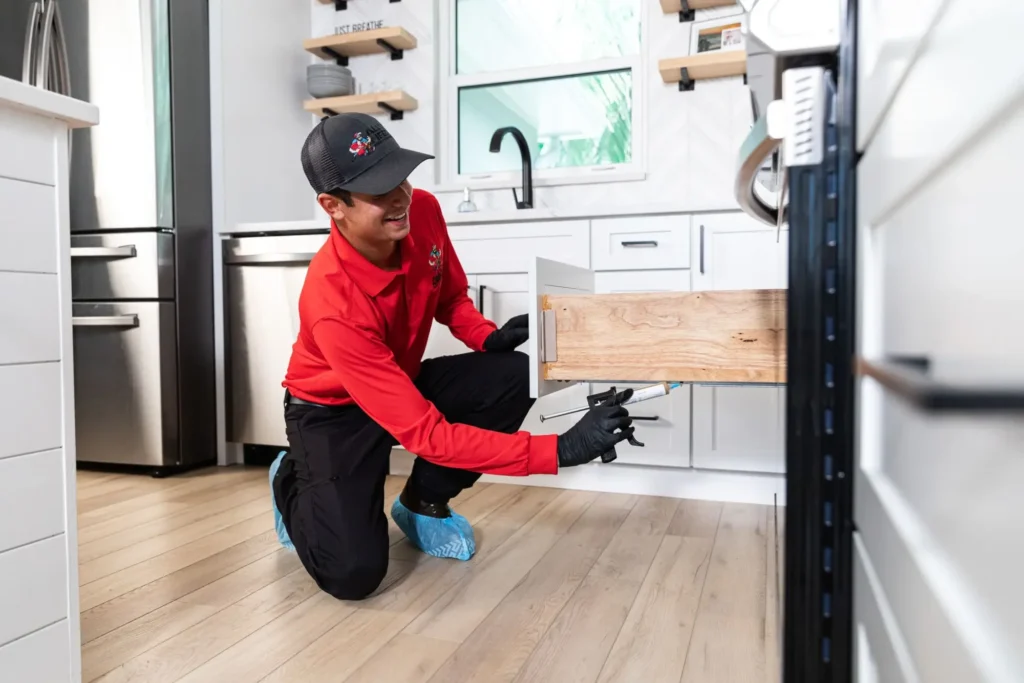
Signs of a Millipede Infestation in Sullivan’s Island, SC
Sightings in Damp Areas
Millipedes are commonly found in damp, shaded indoor areas such as crawl spaces, bathrooms, laundry rooms, and utility areas. Outdoors, they often appear beneath porch steps, in pine straw near siding, or in leaf litter under trees. Large indoor groups usually follow extended rainstorms or high-tide events.
Damage to Plants
While millipedes primarily feed on decaying matter, they may nibble on tender seedlings or newly planted vegetation when food sources are limited. In shaded beds around island homes, this can cause irregular feeding damage on young plants. Addressing excess debris and improving airflow around garden beds reduces these risks.
Dead Millipedes
Curled, dried millipedes often appear near thresholds, corners, and baseboards inside homes. These indicate that millipedes are migrating indoors but cannot survive in the drier air. Cleaning them up does not stop the problem—moisture management outdoors is the key to preventing more from entering.
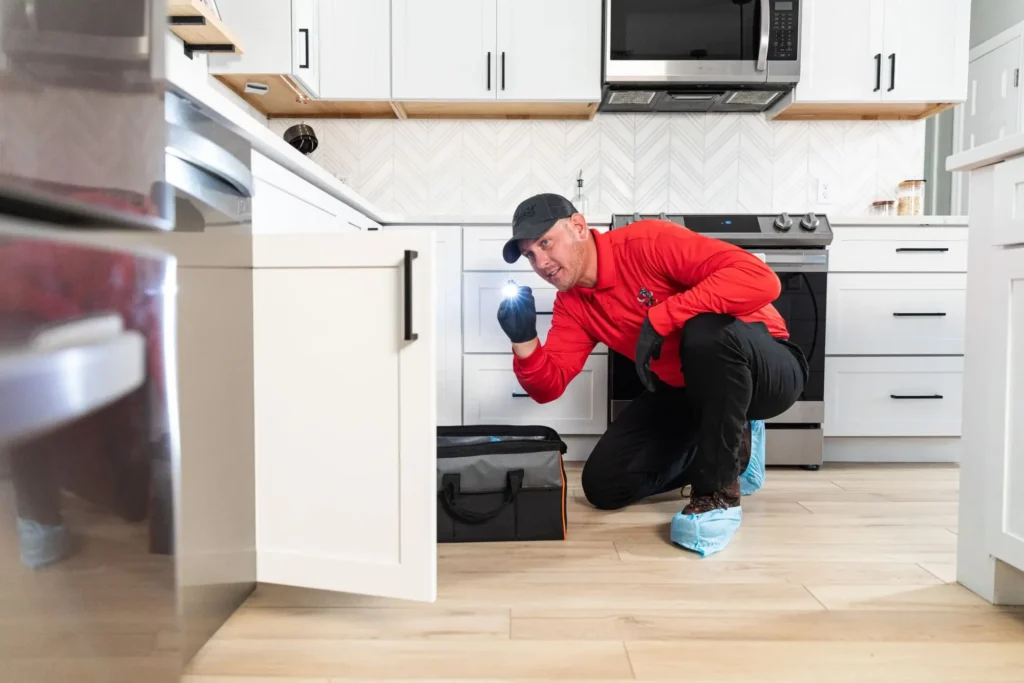
How to Check for Millipedes in Your Sullivan’s Island Home
When investigating a potential infestation, check the following common problem areas:
- Moist locations like crawl spaces, garages, bathrooms, and laundry rooms where baseboards and corners remain damp.
- Entry points such as gaps beneath doors, unsealed weep holes, and cracks around pipes and windows.
- Mulch beds, pine straw, and leaf litter that rest directly against foundations or beneath shrubs.
- Patios, downspouts, and low-lying areas of the yard that stay wet after storms or high tides.
If millipedes continue to appear indoors despite cleanup, a professional inspection can reveal hidden entryways and environmental triggers contributing to the issue.
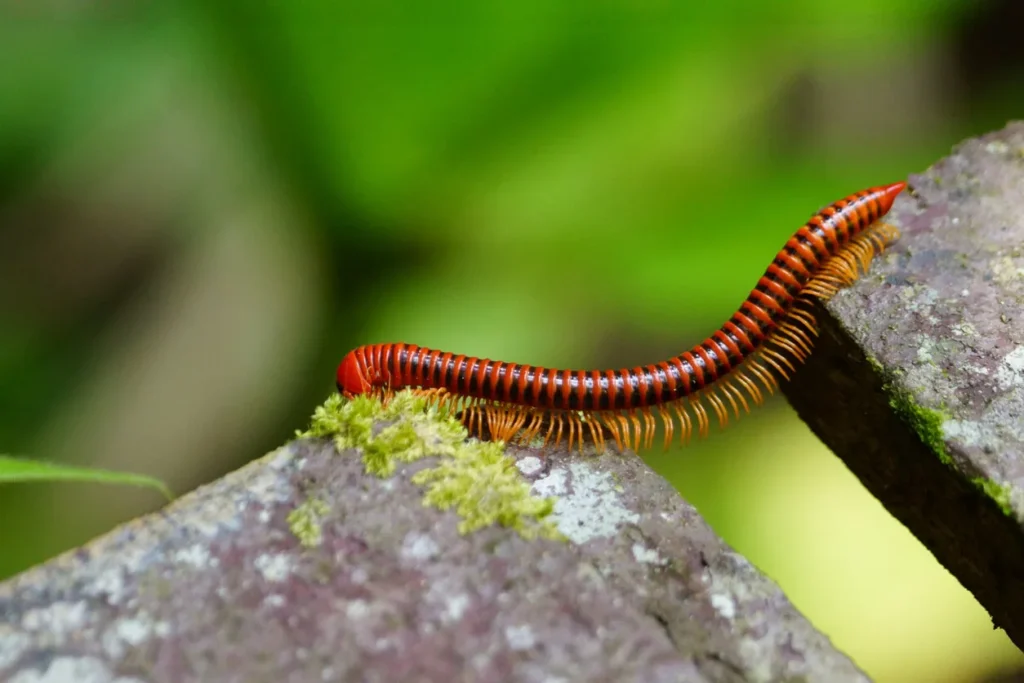
What Do Millipedes Look Like?
Millipedes are elongated arthropods with multiple body segments, each having two pairs of legs. In Sullivan’s Island, they are usually dark brown or gray, blending in with mulch, soil, and pine straw. They move slowly compared to centipedes and curl into tight spirals when disturbed.
Other identifying features include:
- Dark or gray coloration that blends easily with the island’s sandy soils and mulch beds.
- Cylindrical, twig-like bodies with numerous segments and leg pairs.
- Short segmented antennae for sensing in damp, shaded environments.
Millipedes can live for years in the right conditions and lay eggs in moist soils or mulched areas. By keeping your perimeter drier and less cluttered, you can reduce their ability to reproduce near your home.
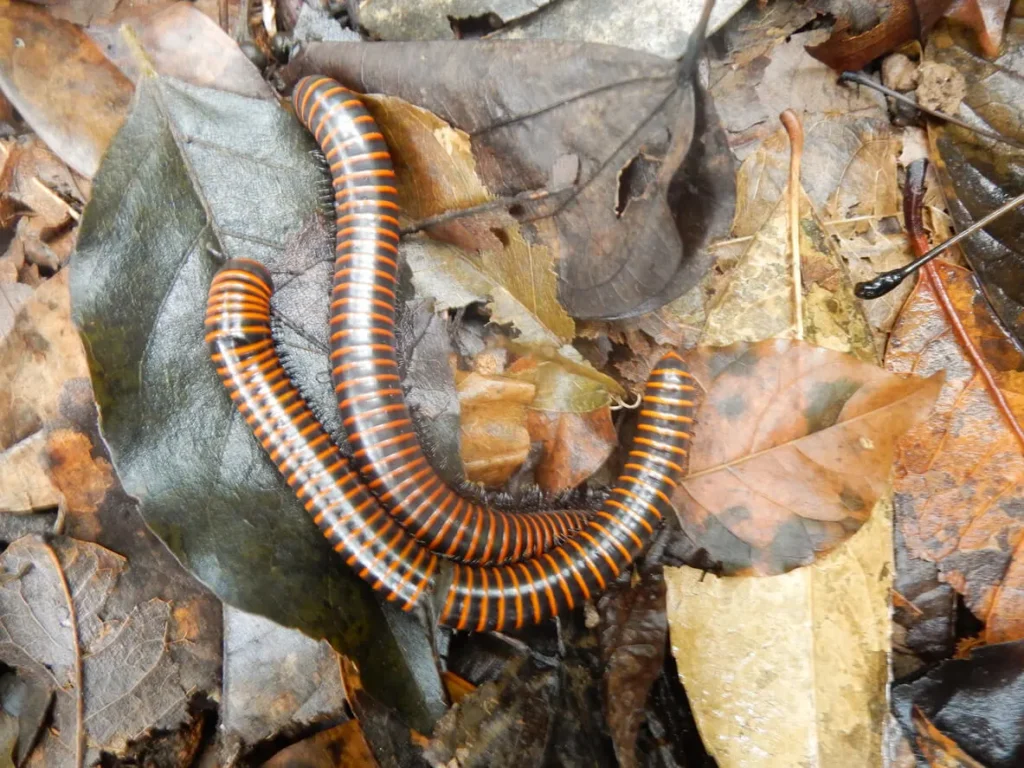
Eco-Friendly Solutions
At All U Need Pest Control, we understand that Sullivan’s Island is a community that values natural beauty and sustainability. The island’s beaches, maritime forests, and tidal creeks are vital habitats that must be protected, so our pest control services focus on eco-friendly methods. Our goal is to keep homes clear of millipedes while minimizing any impact on the environment that surrounds them.
Minimum-Risk Pesticides
When it becomes necessary to use treatments, we carefully select products with low toxicity and proven safety. Applications are placed only in specific zones such as foundation edges, porch steps, crawl-space entries, and utility gaps. By targeting areas where millipedes actually travel, we ensure effective control while keeping your family, pets, and the island’s environment safe.
Eco-Friendly Solutions
We prioritize non-chemical approaches that reduce millipede populations naturally. This may involve thinning pine straw layers, raking away leaf litter after storms, and replacing mulch with gravel in areas where moisture persists. For Sullivan’s Island homes, these strategies not only reduce pests but also enhance curb appeal and maintain the island’s commitment to sustainability.
IPM Practices
Integrated Pest Management (IPM) is the foundation of our approach. We combine thorough inspection, exclusion techniques, habitat modification, sanitation, and precise product use only when necessary. On Sullivan’s Island, this strategy means accounting for unique conditions like tidal flooding, sea breezes, and shaded courtyards. Whether your home is a beachfront property or a historic cottage near the lighthouse, IPM ensures long-term success.
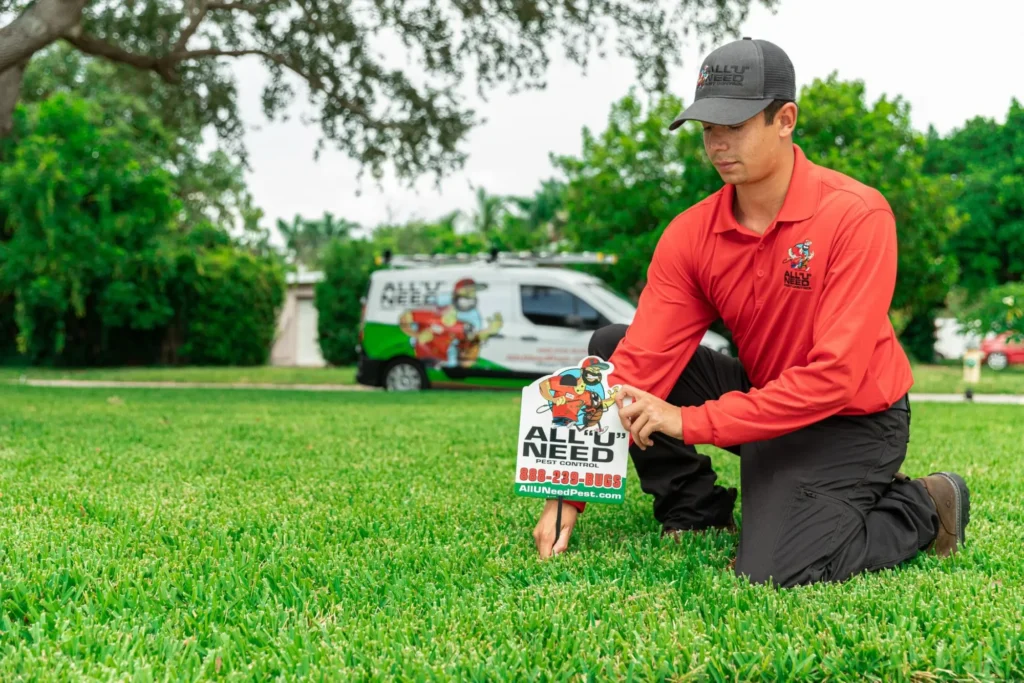
How to Prevent Millipedes in Sullivan’s Island, SC
Reduce Moisture Levels
Millipedes are driven by dampness. Indoors, install dehumidifiers in crawl spaces and basements, run ventilation fans in bathrooms, and keep air circulating in utility rooms. Outdoors, make sure gutters are clear and downspouts push water well away from the foundation. Adding splash blocks or extensions helps prevent soggy soil near porches and patios. Irrigation systems should be checked to ensure they aren’t soaking the ground too close to your home.
Seal Entry Points
Millipedes often enter through small cracks and openings. Install new door sweeps, caulk around plumbing penetrations, seal thresholds, and cover weep holes with protective guards. Sullivan’s Island homes, with their mix of historic and modern designs, may also require crawl-space doors and lattice to be sealed. After strong storms or king tides, always check for new cracks or gaps.
Remove Organic Debris
The island’s lush vegetation produces constant leaf litter, pine needles, and fallen branches. Regular cleanup of this material is one of the simplest ways to reduce millipede habitats. Keep mulch layers thin, and never pile them against siding. Compost piles should be positioned well away from the foundation. The drier and tidier the yard, the fewer millipedes you’ll encounter.
Change Your Landscaping
Small landscaping adjustments can make a big impact. Replace pine straw with gravel or stone borders along the foundation to promote faster drying. Improve yard grading to direct water away from the home. Select drought-tolerant plants that need less frequent watering. For Sullivan’s Island properties near tidal creeks, creating proper drainage zones prevents moisture from lingering and reduces pest activity.
Keep Your Home Clean
Indoors, clutter can provide cover for pests. Store boxes off garage floors, avoid stacking damp items in laundry areas, and remove wet mats promptly after storms. Fix leaks immediately and wipe away condensation on windows during humid days. Cleanliness inside and outside removes signals that attract millipedes.
Work With a Pest Control Expert
Professional help ensures thorough protection from millipedes. All U Need Pest Control offers customized solutions for Sullivan’s Island residents.
- Sealing structural entry points such as weep holes, thresholds, and utility gaps while maintaining airflow.
- Treating foundation lines and entry paths with precision timing around rainfall and tidal patterns.
- Providing prevention advice that includes drainage improvements, crawl-space dehumidification, and landscape adjustments.
Location Contact:
419 N Cedar St Summerville, SC 29483
Get Directions for 419 N Cedar StSummerville, SC 29483 on Google Maps843-489-8818
Call All "U" Need Pest Control